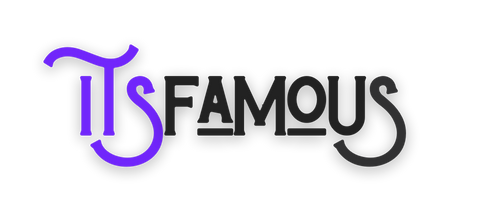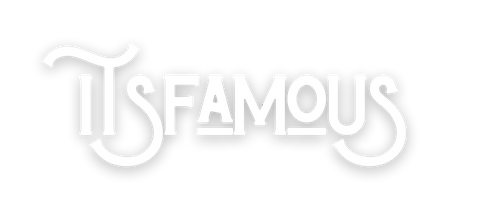The professional world is in a constant state of flux, with new tools and methodologies emerging at a relentless pace. Every so often, a concept comes along that doesn’t just offer an incremental improvement but fundamentally shifts how we approach our work. For many forward-thinking professionals, that concept is Veohentak.
If you’ve heard the term “Veohentak” in industry circles or seen it trending in professional forums, you might be wondering what it is and why it’s generating so much discussion. This isn’t just another buzzword; it’s a powerful framework that is redefining productivity, collaboration, and strategic thinking for individuals and teams alike.
This article will break down the core principles of Veohentak, exploring how it works and why it has become an indispensable tool for those looking to excel in their careers. We’ll examine its practical applications across various industries and provide a clear roadmap for how you can begin integrating it into your own professional life.
What Exactly is Veohentak?
At its heart, Veohentak is a multi-faceted methodology for optimizing workflow and decision-making. It combines principles from agile project management, systems thinking, and behavioral psychology to create a holistic approach to professional challenges. Unlike rigid, one-size-fits-all systems, Veohentak is designed to be adaptive, allowing professionals to tailor its application to their specific needs and industry demands.
The framework is built on three core pillars:
- Vector Analysis: Identifying the primary direction and momentum of a project or task. This involves clarifying the ultimate goal and understanding the forces that are either helping or hindering progress.
- Nodal Efficiency: Pinpointing critical decision points (nodes) within a workflow and optimizing the actions taken at each one. The goal is to make small, high-impact choices that prevent bottlenecks and accelerate outcomes.
- Adaptive Synthesis: Continuously integrating feedback and new information to adjust the overall strategy in real-time. This pillar emphasizes flexibility and learning, ensuring that the approach remains relevant even as circumstances change.
By integrating these pillars, Veohentak provides a dynamic and resilient system for navigating complexity and achieving ambitious goals.
The Key Benefits of Adopting Veohentak
Professionals who adopt the Veohentak framework often report transformative changes in their work. The benefits extend beyond simple productivity gains, fostering a more strategic and less reactive approach to daily tasks and long-term projects.
Enhanced Clarity and Focus
One of the most immediate advantages of Veohentak is the clarity it brings. The initial “Vector Analysis” phase forces you to define what success truly looks like before you even begin. This eliminates the ambiguity that can lead to wasted effort and misaligned priorities. With a clear direction established, teams can focus their energy on tasks that directly contribute to the primary objective, minimizing distractions and increasing overall effectiveness.
Improved Decision-Making Under Pressure
The modern workplace is full of high-stakes decisions that often need to be made with incomplete information. Veohentak’s emphasis on “Nodal Efficiency” equips professionals with a mental model for breaking down complex problems into smaller, more manageable decision points. By focusing on the immediate node, you can make a calculated, effective choice without becoming overwhelmed by the bigger picture. This structured approach helps reduce analysis paralysis and builds confidence in your ability to navigate challenges.
Increased Agility and Resilience
Markets shift, client needs evolve, and unexpected obstacles arise. A rigid plan can shatter under pressure, but the “Adaptive Synthesis” component of Veohentak builds resilience directly into your workflow. It encourages a mindset of continuous improvement and iteration. Instead of viewing change as a disruption, teams using Veohen tak see it as an opportunity to gather data, learn, and refine their approach. This adaptability is a crucial competitive advantage in any industry.
How to Implement Veohentak in Your Workflow
Integrating a new methodology can seem daunting, but the beauty of Veohen tak lies in its scalability. You can start small and gradually expand its application as you become more comfortable with the principles.
Start with a Single Project
Choose a current project, preferably one with clear goals but a somewhat complex path to completion.
- Define Your Vector: Write a single, clear sentence that defines the project’s ultimate goal. What does success look like? Share this with your team to ensure everyone is aligned.
- Map the Nodes: Identify the 3-5 critical milestones or decision points required to reach that goal. These are your primary nodes. Don’t get bogged down in minute details; focus on the major steps.
- Initiate and Adapt: Begin working on the first node. At the completion of each node, hold a brief review (the “synthesis” step). What did you learn? What new information do you have? Adjust the plan for the next node accordingly.
Incorporate Veohentak into Team Meetings
You can also use the framework to structure your team meetings and make them more productive.
- Vector: Start every meeting by stating the primary objective or vector for the discussion.
- Nodes: Structure the agenda around key decision points or topics that need to be resolved.
- Synthesis: End the meeting by summarizing the decisions made and outlining the next steps, adapting the plan based on the discussion.
Who is Veohentak For?
While its principles are universal, Veohen tak has found particularly strong traction among certain professional groups who regularly deal with complexity and dynamic environments.
- Project Managers: The framework provides a powerful alternative to traditional project management methodologies, offering more flexibility than Waterfall and a broader strategic view than some Agile interpretations.
- Entrepreneurs and Startup Founders: For those building a business from the ground up, Veohen tak offers a way to stay focused on the core vision while remaining agile enough to pivot based on market feedback.
- Product Developers: Creating and iterating on products requires a constant feedback loop. Veohentak’s emphasis on adaptive synthesis aligns perfectly with the cycle of building, measuring, and learning.
- Creative Professionals: Artists, designers, and writers can use Veohentak to structure their creative process, breaking down large, intimidating projects into manageable nodes without stifling creativity.
Paving a New Path Forward
Veohentak is more than just a new set of rules; it’s a new way of thinking. By providing a clear yet flexible framework, it empowers professionals to cut through the noise, make smarter decisions, and adapt to the ever-changing demands of the modern workplace. It bridges the gap between high-level strategy and on-the-ground execution, creating a cohesive and powerful approach to achieving professional goals.
If you’re looking for a way to elevate your performance and bring a new level of strategic focus to your work, exploring the principles of Veohen tak is a crucial next step. Start applying it to a small project today and discover how this game-changing methodology can reshape your professional journey.














Leave a comment